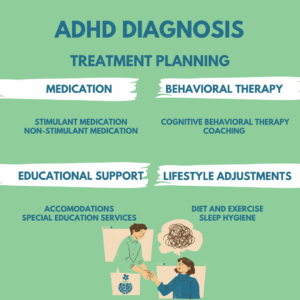What is the most misunderstood thing about ADHD?
Attention Deficit Hyperactivity Disorder (ADHD) is a neurodevelopmental disorder characterized by a pattern of behavior that can include difficulty in maintaining attention, impulsive actions, and, in some individuals, hyperactivity. Despite its widespread recognition and research, ADHD remains one of the most misunderstood conditions, shrouded in myths and misconceptions that often overshadow the reality of those living with it. In this article, we aim to clarify the most misunderstood aspects of ADHD, backed by scientific evidence and expert insights, to foster a deeper understanding and empathy towards those affected.
The Myth of ADHD Being a “Childhood Only” Disorder
One of the most pervasive myths about ADHD is that it is exclusively a childhood disorder, from which individuals “grow out” as they mature. This misconception leads to a significant number of adults with ADHD being undiagnosed or misdiagnosed, struggling with symptoms that affect their personal and professional lives without understanding the root cause.
The Reality:
ADHD is a lifelong condition. While symptoms may evolve or change in presentation from childhood to adulthood, the underlying neurodevelopmental differences persist. For many adults, ADHD manifests in challenges with time management, organizational skills, maintaining focus on tasks, and regulating emotions.
Dispelling the “Laziness” Stigma
Another common misunderstanding is equating ADHD symptoms with laziness or a lack of willpower. This stigma is harmful and overlooks the complex neurological basis of ADHD.
The Reality:
Individuals with ADHD often exert more effort and energy to accomplish tasks that may seem straightforward to others. The challenge lies in the inconsistency of their performance, governed by factors such as interest level, novelty, and the complexity of the task, rather than a simple lack of effort.
Understanding the Diversity of ADHD
The stereotype of a hyperactive young boy has long dominated the perception of ADHD, leading to underdiagnosis in those who do not fit this narrow image, particularly in girls and women.
The Reality:
ADHD presents in three primary subtypes: Predominantly Inattentive, Predominantly Hyperactive-Impulsive, and Combined Type. Each subtype can look very different in terms of symptoms and behaviors. Girls and women, in particular, are often diagnosed later in life due to the subtlety of their symptoms, such as daydreaming and inattentiveness, which can be overlooked or misinterpreted.
ADHD and Its Comorbidities: A Closer Look
It is a common misconception that ADHD is a standalone condition. However, it is often accompanied by one or more comorbid conditions, which can complicate diagnosis and treatment.
The Reality:
Many individuals with ADHD also experience conditions such as anxiety, depression, learning disabilities, and sleep disorders. Understanding and addressing these comorbidities is crucial in developing an effective treatment plan.
A Call for Comprehensive Support and Understanding
The journey to understanding and managing ADHD requires a comprehensive approach that goes beyond medication. Tailored behavioral therapies, accommodations in educational and professional settings, and supportive community resources play pivotal roles in the well-being of individuals with ADHD.
Understanding ADHD Treatment Approaches

The complexity of ADHD extends far beyond the common myths and stereotypes that pervade public perception. By debunking these myths and fostering a more nuanced understanding, we can create a more empathetic and supportive environment for those affected by ADHD. It’s time to move past simplistic narratives and appreciate the full spectrum of experiences and challenges faced by individuals with ADHD, recognizing their strengths and potential alongside their struggles.
